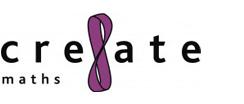Maths and Sport
Classroom Olympics
These Cre8ate maths activities require the use of averages, ranges, percentages, histograms, stem and leaf displays, pie charts, and tables to make comparisons, interpretations, and conclusions.
Problem Solving - Football Problems
This Teachers TV lesson starter video presents a problem based on a football team. It is time for the seven-a-side football team to have their photograph taken. Unfortunately, the photographer only knows the goalkeeper's name, so he uses number clues to position the players so he can take the best team photograph. Students can follow the clues to work out where each player should stand. It is suggested that the video is paused after each clue to allow students time to work out the solution at each step of the problem.
Constructions and Loci
Running track activity.
Open the activities file for a simple, but nice, activity based upon a running track.
Cricket Match
A Teachers TV video.
Cricket is a game based on numbers and mathematics and these ten short sequences, shot during a Saturday cricket match, each display a different aspect of mathematics for students to investigate and discuss. Probability, speed, statistics, estimation, the shape of a pitch and the trajectory of the ball are some of the topics they encounter.
Pod 1: Up to the Mark
In this Nuffield Foundation activity students carry out an investigation into some sporting techniques to establish whether practice improves performance. They conduct research into the rationale for training schedules for different sports. Students then investigate target games to explore whether scoring systems reward skill fairly and trial different point systems to see how they affect the outcome of league competitions. Finally groups of students conduct a short, independent inquiry where they design a new scoring system for a familiar game.
Pod 2: In Top Gear
In this Nuffield Foundation activity students use secondary data to investigate how changes in technology have led to improved performance in cycling. They research footwear to see how materials of different properties can be combined for specific purposes and carry out a practical investigation to define the optimum design of a bat. Students then use attributes analysis to see how varying the individual elements of game will affect its nature. Groups of students finish the pod by conducting a small practical investigation to test or improve a piece of equipment of their choice.
Maths and Sport
A superb website with a wealth of resources, ideas, video and inspiration which can be used for introducing sport into the mathematics classroom.
After the Matter
After the Matter website looks at the effect hosting the Olympics has the number of medals won by te host country.
The data could be used to look at trends, moving averages to predict how many medals countries will get at the next olympics.
What is the increase factor involved in being the host.
How many medals should Brazil get at the next Olympics.?
Maths in sport - soccer booklets
This archive material is a bit dated for use in the classroom but is a useful source of ideas that can be adapted for use today.
These three Eigen publications booklets provide a range of data handling activities based on football. The booklets largely focus on calculation of means and the use of tallies, frequency tables and bar graphs. However, they also encourage students to look at rather larger amounts of data than they would meet in many texts and to comment on, and make sense of, what they observe.
Maths in Sport - Non-Soccer Booklets
This archive material is a bit dated for use in the classroom but is a useful source of ideas that can be adapted for use today.
hese four independent booklets focus on the use of data handling skills in the indicated sports.
• The decathlon uses the events’ data tables to produce graphs and then estimating the performances required to meet a specific target.
• Test match cricket involves the extraction of cricketing information from cricket scorecards.
• The marathon supports a lot of graph production and interpretation from the data tables provided.
• Open golf includes data handling calculations and investigations such as finding out which holes were easiest / hardest in terms of producing pars, birdies, bogies etc





